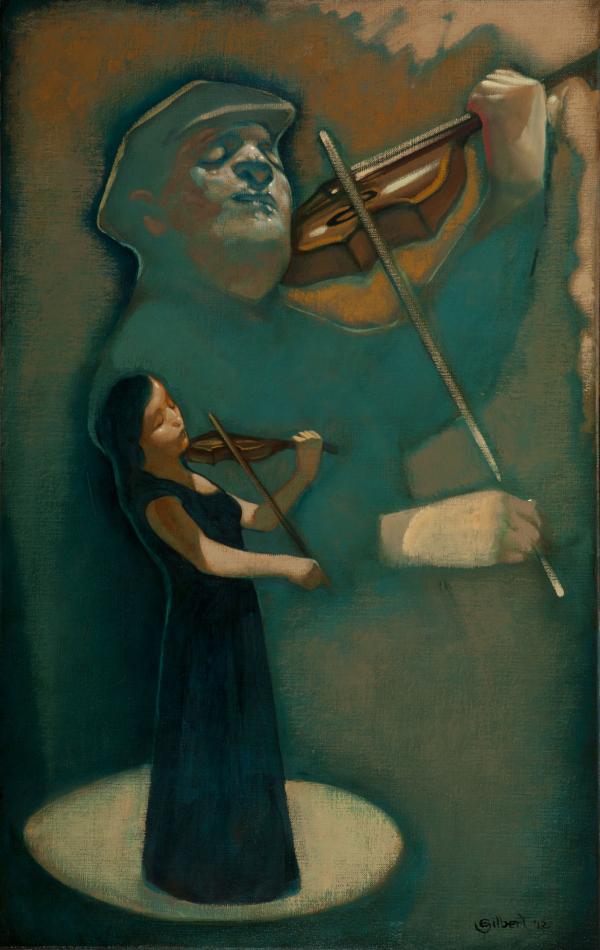Rebirth of a Folk Tradition
From the curator
In musical parlance, "klezmer" might be one of the most disputed terms. Interpretations and translations of its exact meaning vary considerably, from its Hebrew origins (k’li zemer) as a term meaning musical instruments, to its Yiddish modification (klezmer) meaning musician, to its post-1970s usage as a genre (or genre modifier) describing a varied array of repertoire and artistic approaches. Further, depending on the perspective of the musician, klezmer is a term that can be leveled as an insult or worn as a badge of honor (see our oral history with the Epstein brothers for more on the former).
In his introduction to this volume, Neil W. Levin spends considerable effort dispelling the notion of klezmer as a meaningful term, pointing out that many aspects of “the aggregate klezmorim repertoire often lay in Jewish as well as non-Jewish musical traditions in disparate parts of large swaths of two empires and beyond.” Yet, even he acknowledges the existence of an evocative set of aesthetic characteristics indicative of a single musical genre or style that fall under what ethnomusicologist Mark Slobin has called the “klezmer umbrella.”
The Classical Klezmer is, as its title suggests, a survey of orchestral and chamber works whose composers have intentionally drawn on the musical characteristics commonly employed in klezmer music. Our earliest examples are two short encore pieces by Jacob Weinberg—actually arrangements of tunes by the clarinetist Simeon Bellison. Weinberg was an active member of the Society for Jewish Folk Music, and these pieces represent that organization’s mission to create a “national” Jewish art music based on Jewish folk repertoires.
The other orchestral works featured here are K’li zemer by Robert Starer, Celestial Dialogues by Ofer Ben-Amots, and Paul Schoenfield’s Klezmer Rondos. Starer’s piece was commissioned by Giora Feidman, one of the most important klezmer practitioners and advocates outside the United States. Starer was familiar with the klezmer tradition from his childhood in Vienna and youth in Palestine, so composing original melodies that invoked the music’s idioms proved a simple task.
Schoenfield’s rondos are varied and intense, incorporating cantorial motifs along with Eastern European scales, Hassidic tunes, and even elements of the badkhn tradition. Celestial Dialogues also juxtaposes the klezmer and cantorial traditions. (Don’t miss our excellent video documentary of this work.) On the works by Starer, Weinberg, and Ben-Amots, the Archive has been fortunate to have clarinetist David Krakauer, arguably the most important klezmer musician of the current era (though his work goes well beyond klezmer).
Chamber works in this volume include a trio, also by Schoenfield, that lives up to its composer’s penchant for music that is at once virtuosic and accessible, a quartet by Yehudi Wyner, and an exciting piece by Osvaldo Golijov that imagines a shofar trapped inside a rocket. Krakauer appears again on this closing piece, along with another modern klezmer pioneer: Alicia Svigals.
Whatever qualms one might have with the term "klezmer," in reality it is no more or less reductive than other musical labels. What matters more are the biases and preconceived notions such labels create that get in the way of our experiencing a musical work on its own terms. This is why we have to listen with open ears and an open mind.
—Jeff Janeczko






